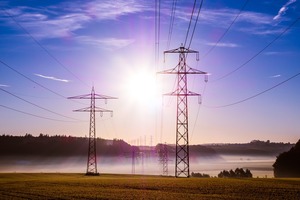Body
In the world of industrial automation and electrical systems, control transformers play a critical role. They ensure the reliable operation of control circuits, which are essential for the functioning of various machinery and equipment. Understanding the specifications of control transformers is crucial for selecting the right one for your application. Here’s a comprehensive guide on what you need to know about control transformer specifications.
Voltage Rating
The voltage rating of a control transformer is one of the most fundamental specifications. It includes the primary and secondary voltage ratings. The primary voltage rating is the voltage input to the transformer, while the secondary voltage rating is the output voltage. Common primary voltages are 120V, 208V, 240V, and 480V, and secondary voltages are typically 24V, 120V, and 240V. It’s crucial to match these ratings with the requirements of your control circuit.
VA Rating (Volt-Ampere Rating)
The VA rating, or power rating, indicates the capacity of the transformer to handle a certain amount of load. It is calculated by multiplying the voltage (in volts) by the current (in amperes). Control transformers are often rated between 50 VA to several hundred VA. Selecting a transformer with the appropriate VA rating ensures that it can handle the load without overheating or experiencing voltage drops.
Frequency
Frequency, measured in hertz (Hz), is another critical specification. Most control transformers are designed for the standard frequencies of 50 Hz or 60 Hz, depending on the region. Using a transformer with the incorrect frequency can result in inefficient operation or damage to the transformer and connected equipment.
Regulation
Voltage regulation is the measure of the transformer's ability to maintain a constant secondary voltage under varying load conditions. It is expressed as a percentage and represents the difference between no-load and full-load secondary voltage. Lower regulation percentages indicate better performance, ensuring that the voltage remains stable, which is crucial for sensitive control circuits.
Temperature Rise
Temperature rise is the increase in the transformer's temperature above the ambient temperature when operating at full load. It is usually expressed in degrees Celsius. Excessive temperature rise can reduce the lifespan of the transformer and affect its performance. It’s important to choose a transformer with a temperature rise rating that is appropriate for the operating environment.
Insulation Class
The insulation class indicates the maximum allowable operating temperature for the transformer’s insulation materials. Common classes include Class A (105°C), Class B (130°C), Class F (155°C), and Class H (180°C). Higher insulation classes allow for higher temperature operation, which can be beneficial in demanding environments.
Mounting and Enclosure
The physical dimensions, mounting configuration, and type of enclosure are also important specifications. Control transformers come in various sizes and mounting styles, such as panel mount or DIN rail mount. The enclosure type determines the level of protection against environmental factors like dust, moisture, and mechanical damage. NEMA and IP ratings provide standards for enclosure protection levels.
Compliance and Standards
Ensure that the control transformer complies with relevant industry standards and certifications, such as UL (Underwriters Laboratories), CSA (Canadian Standards Association), or IEC (International Electrotechnical Commission). Compliance ensures that the transformer meets safety and performance standards.
Conclusion
Understanding the specifications of control transformers is essential for selecting the right transformer for your application. By paying attention to voltage rating, VA rating, frequency, regulation, temperature rise, insulation class, mounting, enclosure, and compliance standards, you can ensure reliable and efficient operation of your control circuits. Proper selection not only enhances performance but also extends the lifespan of both the transformer and the equipment it supports.








Comments